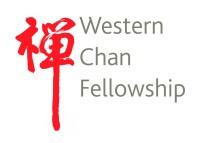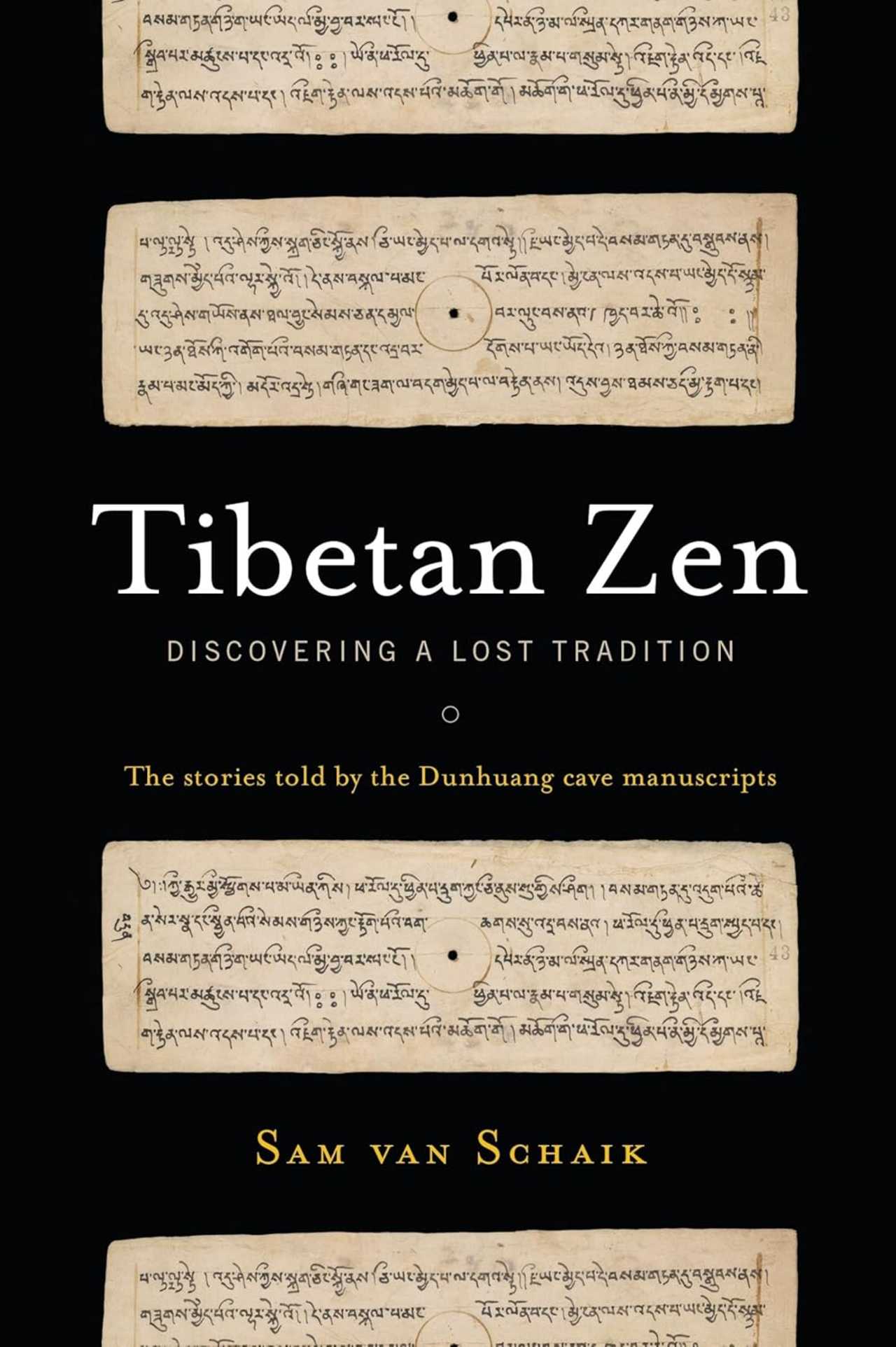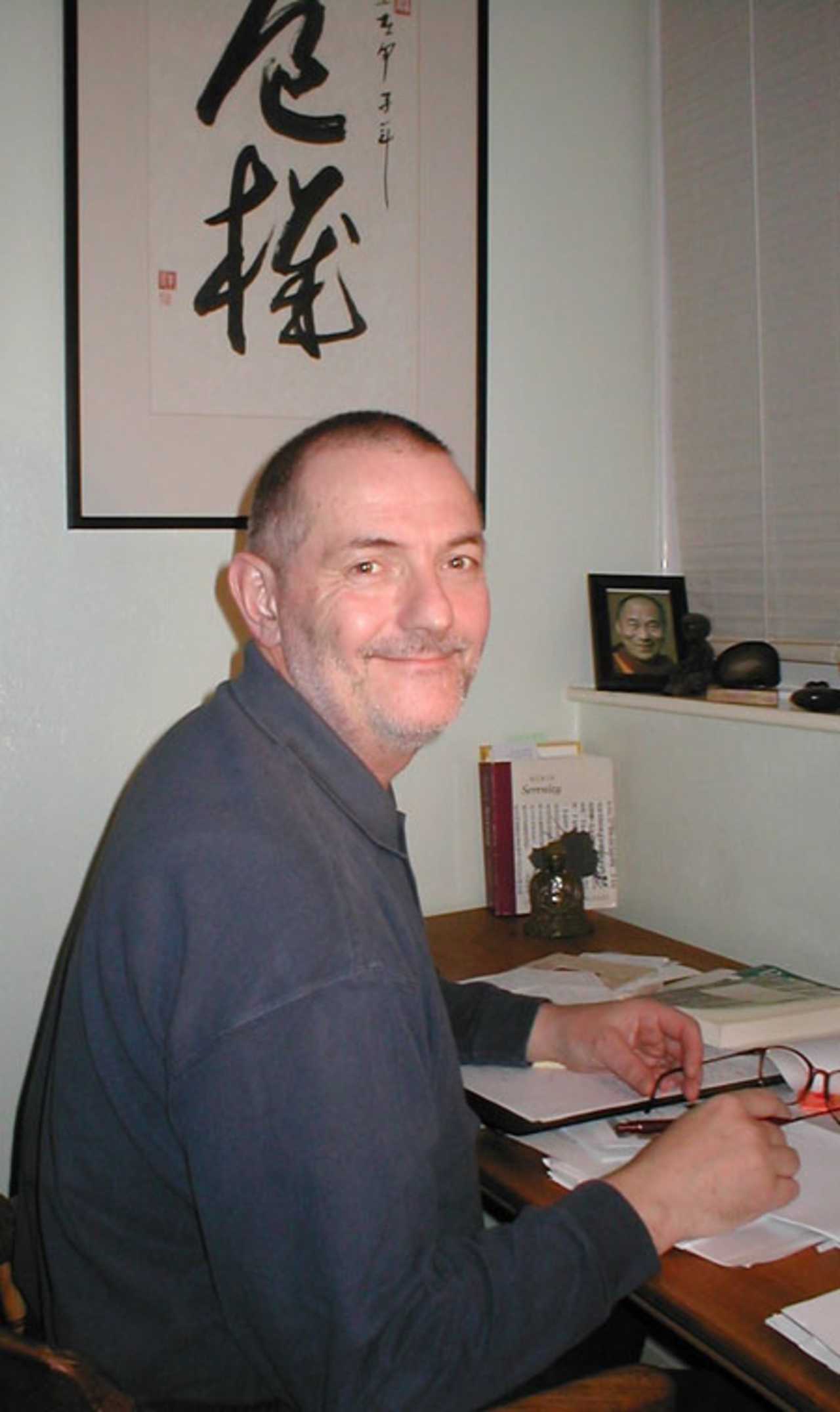Tibetan Zen
A review of Sam van Schaik’s Tibetan Zen: Discovering a Lost Tradition (2015), Snow Lion, London.
This book is of interest to our Sangha for several reasons. Firstly, John Crook always maintained a link with Tibetan traditions through various practices, especially Mahamudra, and that link continues with our Tibetan based liturgy on Western Zen Retreats. Secondly, this book originates from translated manuscripts of the International Dunhuang Project, a project to which our Sangha made two related sponsorships, a translation of the Lankavatara Sutra by Bill Porter (Red Pine) and the digitisation of a copy of the Vajracchedika Prajnaparamita Sutra (the Diamond Sutra) held in the British Library. A third reason is that the book represents an opportunity to study some aspects of the early development and history of the Chan tradition.1
In the Dunhuang caves, the majority of the manuscripts are in the Chinese language but here it is just the Tibetan language manuscripts, dated between the 9th and 10th centuries CE, that are translated. This provenance marks them as the earliest known source material for Tibetan Buddhism. At this time distinct lineages or schools of Chan had not yet emerged, even though this is implied by traditional stories, but modern research strongly suggests that there were a range of different sanghas usually around a single master practising an approach that emphasised meditation (dhyana). Hence, in talking about ‘Chan’ at this time, we need to consider it as being an over-arching term covering various versions that can be grouped together via particular resemblances. These include instructions on how to meditate, teaching on the inherent nature of Buddha Mind within the ordinary mind, the ritual bestowing of the Bodhisattva precepts and a transmission through linkages to Bodhidharma. Under this umbrella of Chan was a version which can be labelled ‘Tibetan Zen’ with its own distinct tradition incorporating some elements of Tantric Buddhism.
The author of this volume has written a well-received book, ‘Tibet: A History.’2 and is a well-known translator of Tibetan. Here, he provides an excellently structured volume, beginning with a comprehensive introduction and followed by chapters on such issues as ‘Encounter and Emptiness’, ‘Debate’, ‘Observing the Mind’, ‘Zen and Tantra’ amongst others. In each chapter, each theme is discussed in terms of its history of the time and therefore there is a constant appraisal of the way the translated document is linked to the development of Chan generally. Under each theme are translations of important and exemplar Tibetan language manuscripts composing just over a third of the book. The author has chosen not to present the standard sutras found in the manuscripts but rather those documents particular to the practice of Chan within the Tibetan culture of the time.
Van Shaik takes an archaeological/cultural perspective in considering the manuscripts rather than the usual textual approach. In the latter, it is the text alone that is given importance and the translating commentator usually undertakes an examination of the ideas within that text, their origin in earlier texts and their development in later presentations. However, by taking a cultural approach the author is able to consider all of the discovered artefacts within the context in which they were found. Utilising this approach, the manuscripts are seen as being an assortment of source material for sermons, services and/or initiation ceremonies used by monks, lay practitioners and teachers alike. As such, they have an importance for the understanding of the development of meditation practices and of the centrality of taking the Bodhisattva precepts.
The manuscripts also provide a possible preliminary insight into the development of the question and answer format that make up the ‘master- student’ encounter dialogues found later in Chan stories and koans. It is now well understood that many of these stories are apocryphal and were constructed in such a way to provide an aid to teaching. In these documents there are several passages of question and answers – for example in the translation of the manuscript entitled A Summary of the Practice of the Instantaneous Approach, we have:
Question: Do you see this finger? Answer: I see it Another question: Are you seeing it now? Answer: I am seeing it. Question: If it is possible to see this finger when it exists, how can you see it when it doesn't exist? This is a great marvel! (page 106).
It could be that these question and answers initially formed an aide memoire for a teacher explaining something to a group of students. Then quite likely, they were incorporated into a liturgical structure of question and response and hence provided a teaching within a ceremony. It is easy to imagine how this arrangement developed into the ‘recorded’ encounters between master and student that have become well established in our tradition.
As one would anticipate in any Chan document there is a focus on meditation instruction. For example in a chapter on ‘Debate’ the question is asked,
“How does one observe the mind?”
“Turn away from the six sense doors and then observe the mind. If discrimination stirs, do not think that it exists or does not exist, is pure or impure, is empty or not empty, and so on. Be without concepts, not even thinking of not thinking.”
(page 124).
Undeniably familiar instructions. Throughout the translations, there is a clear demonstration of how at this early time in the development of Chan, the Lankavatara Sutra was a central spiritual source and it was used more than the Perfection of Wisdom literature which only came to prominence later.
It is very possible that Chan teachers from China played an important role near the beginning of the development of Buddhism in Tibet but, clearly, it did not survive to become part of the established spiritual life of that area. The traditional story of Chan’s disappearance from Tibet was that there was a debate between the ‘Tibetan’ approaches derived from India represented by the Indian monk, Kamalasila, and the Chinese monk Moheyan representing Chan. The Indian approach was based on graduated methods in which the Tantric and Sutra teachings were carefully laid out as steps toward enlightenment, whereas the Chinese teacher emphasised concept-free meditation rather than a multitude of methods. The story goes that in the debate Moheyan was soundly beaten and the Tibetan Emperor banished Chan from the land and hence the graduated path approaches became firmly established in Tibet. The scholarship in this book however demonstrates that this story is a myth and not dissimilar to many others in Chan history was possibly constructed for pragmatic political reasons at a later date. It is also apparent that Moheyan was not just a defeated monk but an important early Chan master.
There was not a distinct entity of ‘Tibetan Zen’ made up of Chan and Tantric elements but rather there were texts and teaching lineages derived from a variety of influences all contributing to a variety of approaches. For example, in one document, there is a prayer to Tantric deities alongside a document of Chan interpretations of some Buddhist concepts and the manuscript’s construction suggests the differing approaches rested side-by-side in a teaching context. The documents also suggest that the common Chan-based meditation instructions of the time, ‘observing the mind’, were included in the phases of the Tantric system of generation, completion and transcendence practices. This suggests that the usual context for the practice of Chan meditation was often within a Tantric framework. Indeed, several of the documents display the interpretation and assimilation of the one approach through the other. The essence of the meditative approach within this ‘Tibetan Zen’ tradition, is identified as ‘instantaneous’ but as a method it was harmonised with various practices that are found in many traditions and it was also harmonised with the need for a graduated approach to practice. Here, we see an essence of Chan as practised today.
Within Tibet, Chan as an approach declined eventually, becoming practically non-existent by the 12th century, with its decline occurring slower than the myth of banishment implies. Its demise did not however undermine the clear underlying links between Chan approaches and Dzogchen and Mahamudra practices.
This volume can readily be recommended to those who are interested in the early history of Chan and in this respect, it is a very worthwhile companion to the history of Chan provided by John McRae, both being based on modern methods of historiography. It will also be of interest to those who wish to read original manuscripts that are the foundation of our tradition and without doubt, with regard to the idiosyncrasies of our own Sangha’s history, it provides a valuable link to a distant past which is now more fully illuminated.
Notes
- In his first footnote the author explains how, for simplicity’s sake, he uses the word ‘Zen’ instead of potential others. I will use the nomenclature ‘Chan’ as most, if not all, that is discussed is connected to Buddhism with its historical and geographical links to China.
- Sam Van Schaik (2013) Tibet: A History. Yale University Press. New Haven, Conn.
- Publication date:
- Modified date:
- Categories: 2018 Book Reviews Eddy Street
-
 Western Chan Fellowship CIO
Western Chan Fellowship CIO - Link to this page
Back


©Western Chan Fellowship CIO 2006-2025. May not be quoted for commercial purposes. Anyone wishing to quote for non-commercial purposes may seek permission from the WCF Secretary.
The articles on this website have been submitted by various authors. The views expressed do not necessarily represent the views of the Western Chan Fellowship.
Permalink: https://w-c-f.org/Q311-648
